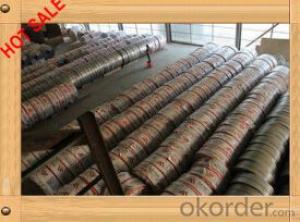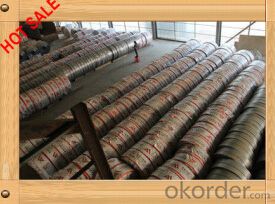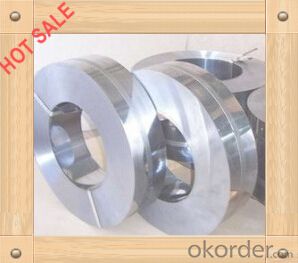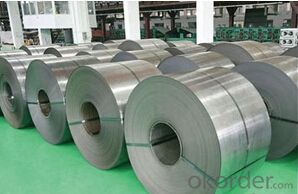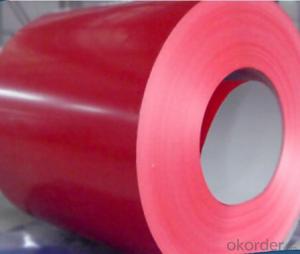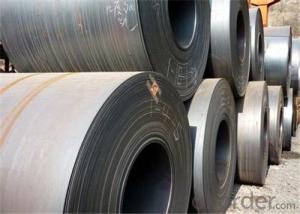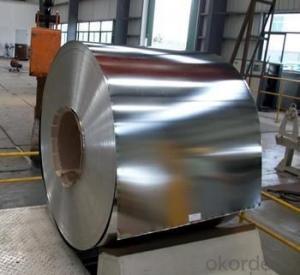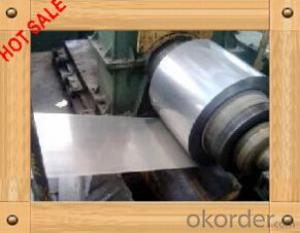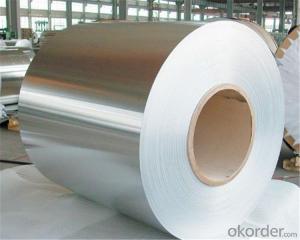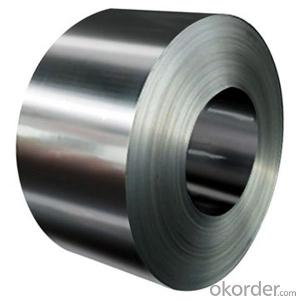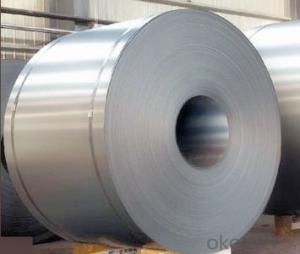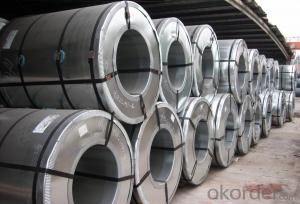201/202/301/304 Grade Stainle Steel Strip /Coil with 2b/Ba Surface
- Loading Port:
- Shanghai
- Payment Terms:
- TT OR LC
- Min Order Qty:
- 25 m.t.
- Supply Capability:
- 10000 m.t./month
OKorder Service Pledge
OKorder Financial Service
You Might Also Like
Basic Info.
Model NO.:201/202/301/304
Surface Treatment:2b, Ba, Hairline, No.4, 8k, Mirror Finish etc.
Certification:ISO, SGS, BV
Technique:Cold Rolled
Standard:ASTM, JIS, GB, AISI, DIN, BS
Application:Pipe/Tube Making, Building , Kitchen Sinks/C
Edge:Mill / Slit Edge
Stock:Stock
Steel Grade:201, 202, 301, 302, 304, 304L, 316,316L
Grade:201, 202, 301, 302, 304, 304L, 316,316L
Width:20mm-1250 Mm
Thickness:0.16-3.0mm
Surface:2b, Ba, Hairline, No.4, 8k, Mirror Finish etc.
Quantity:as Request
Delivery Time:1-14 Days
Payment Term:FOB/CIF/CFR/EXW
Export Markets:Global
Additional Info.
Trademark:JH
Packing:Woven, Wooden Box
Standard:prime
HS Code:72209000
Production Capacity:800000 Tons/Year
Product Description
3201/202/301/304 GRADE Stainles Steel Strip /coil with 2B/BA surface
stainless steel strip
stainless stee coil
steel coil
stee strip
| Material GRADE | 201, 202, 301, 304, 304L, 316, 316L |
| Standard | ASME, ASTM, EN, BS, GB, DIN, JIS, etc |
| Technique | Hot rolled / cold rolled |
| Raw material source | JHSCO or as your request |
| Width | 10mm-1250 mm |
| Thickness | 0.16mm-3.0mm |
| Quantity | as your request |
| Surface | 2B, BA, 8K, No. 4 No.1,8K, Mirror finish etc. |
| Packaging | Standard export sea-worthy packing |
| Delivery time | 1-15days |
| Supply ability | S.S HR COIL= 1000 000 TONS/ year ,S.S CR COIL= 800 000 TONS/ year,s.s pipe=200 000 TONS/ year |
| Payment terms | L/C, T/T |
| Application range | Pipe/tube making,building material,kitchen sinks/cutlery,baths,elevators,automotive application,industrial application,hardware-tools etc. |
- Q: What are the common defects found in steel coils?
- Some common defects found in steel coils include surface defects such as scratches, dents, and rust spots. Other defects may include coil breaks, which are cracks or breaks in the steel, as well as wavy edges, uneven thickness, and coil set, which is when the coil has a permanent curvature.
- Q: Can steel coils be coated with zinc?
- Yes, steel coils can be coated with zinc through a process called galvanizing. This coating provides protection against corrosion and increases the durability and longevity of the steel coils.
- Q: What are the challenges faced during steel coil processing?
- Some of the challenges faced during steel coil processing include ensuring proper alignment and feeding of the coils into the machinery, handling the heavy weight and size of the coils, managing the high temperatures involved in processing, preventing surface defects or damage to the steel, maintaining consistent quality throughout the process, and minimizing material waste and scrap.
- Q: I want to make a lap steel guitar in my wood tech class. can anyone give me a link to a video or site that has steps on how to build one.
- Steel guitars have cables attached to foot pedals to change the sound. I don't know how this would work with the top resting on your lap.
- Q: What are the different grades of steel used for coils?
- The different grades of steel used for coils vary depending on the specific requirements and applications. Some common grades include low-carbon steel (e.g., ASTM A36), medium-carbon steel (e.g., ASTM A516), high-strength low-alloy (HSLA) steel (e.g., ASTM A572), and stainless steel (e.g., 304 or 316). Each grade offers distinct properties such as strength, corrosion resistance, and formability, enabling manufacturers to choose the appropriate one based on their needs.
- Q: How are steel coils used in the production of signage?
- Steel coils are used in the production of signage by being cut into sheets and then shaped into various sign components. These coils provide a durable and rigid material that can be easily manipulated and formed into different shapes, allowing for the creation of sturdy and long-lasting signs.
- Q: What materials are used to make steel coils?
- Steel coils are primarily made from iron ore, coke, limestone, and scrap steel.
- Q: How do steel coils impact the overall cost of production?
- The overall cost of production in various industries is greatly affected by steel coils. Initially, the expense of the steel coils themselves can be quite significant. The price of steel is influenced by several factors, including supply and demand, raw material costs, and market fluctuations. Any increase in the price of steel coils can directly impact the overall cost of production, as they are a major component in the manufacturing process. Furthermore, the operational costs of production are also influenced by steel coils. These coils are commonly used in different manufacturing processes, such as stamping, rolling, and forming, which require specialized machinery. The efficiency and effectiveness of these processes greatly depend on the durability, quality, and size of the steel coils. If the coils are of low quality or not suitable for the specific production requirements, it can result in increased downtime, machinery maintenance, and rework, all contributing to higher production costs. Additionally, the transportation costs associated with steel coils can impact the overall cost of production. Steel coils are typically heavy and bulky, requiring special handling and transportation arrangements. The logistics costs can be significantly influenced by factors such as the distance between the supplier and the production facility, as well as the chosen mode of transportation. Any rise in transportation expenses, such as fuel prices or shipping fees, can directly affect the overall cost of production. Lastly, the availability of steel coils can also impact production costs. During periods of high demand or limited supply, the price of steel coils may increase, resulting in higher production costs. Moreover, if there is a shortage of steel coils due to trade restrictions or disruptions in the supply chain, manufacturers may have to resort to alternative materials or sources, which could be more expensive or of lower quality. These factors can have a ripple effect on the overall cost of production. In conclusion, steel coils have a significant impact on the overall cost of production. Their cost, quality, transportation, and availability all influence the efficiency, effectiveness, and affordability of the manufacturing process. Therefore, manufacturers must carefully consider and manage these factors to optimize their production costs and maintain competitiveness in their respective industries.
- Q: How are steel coils measured?
- Steel coils are typically measured by their weight, length, width, and thickness. The weight is usually expressed in tons or kilograms, while the dimensions are measured in inches or millimeters.
- Q: and what are the four main elements in STAINLESS steel? x
- Very high carbon steel (0.96 to 2.11%) is hard and not very ductile (difficult to mold or shape). It is also difficult to weld, but has the lowest melting point. As the carbon content is reduced, the steel becomes softer, more ductile and melts at a higher temperature. Stainless steel is an alloy of Iron, Carbon, Chromium. The fourth element would depend upon the grade of steel, but Nickel is probably the most common.
Send your message to us
201/202/301/304 Grade Stainle Steel Strip /Coil with 2b/Ba Surface
- Loading Port:
- Shanghai
- Payment Terms:
- TT OR LC
- Min Order Qty:
- 25 m.t.
- Supply Capability:
- 10000 m.t./month
OKorder Service Pledge
OKorder Financial Service
Similar products
Hot products
Hot Searches
Related keywords
